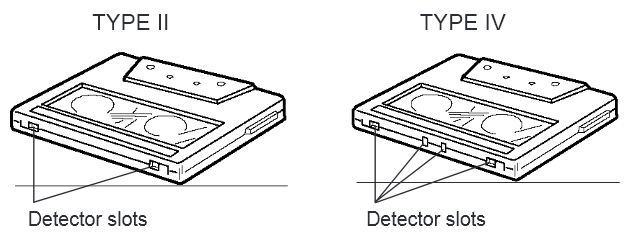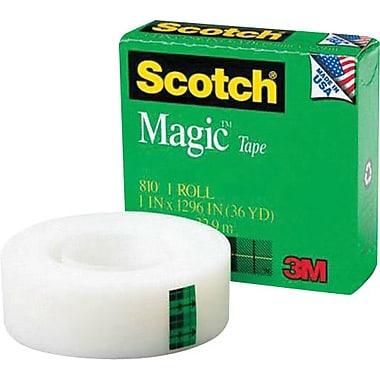|
|
Post by hcsunshine90 on Jun 26, 2014 8:39:09 GMT -5
so, I'm playing cassette tapes through my NAK tape player. i know that when you buy blank tapes and record something onto them, and play them, you know which setting to put your tape player on (type 1, type 2 etc.) because it says on the tape what kind of bias tape it is. was wondering for tapes that are put out by the studios though, what bias tapes are those usually? at first, I assumed that they would be a cheaper type 1 tape because they are mass produced and so to save money and such. but I was recently playing a studio tape and I switched the NAK from the type 1 setting to the type 2 setting and it sounds better. it's got a better high end, treble and such. so which setting should I use for studio tapes, whichever sounds best maybe?
|
|
bootman
Emo VIPs    Typing useless posts on internet forums....
Typing useless posts on internet forums....
Posts: 9,358
|
Post by bootman on Jun 26, 2014 8:57:46 GMT -5
Ah memories! Tape bias is set depending on the type of tape used. Type 1 for Fe2O3 (iron oxide). Type 2 for CrO2 (chromium oxide) I remember a type 4 for Fe (metal) tapes but don't remember if there was ever a type 3.....need to Google that.  As far as what tape bias is I found this. en.wikipedia.org/wiki/Tape_biasYou only needed to worry about bias when recording so that you matched the type of tape you were going to use. But in the end, use the setting for pre-recorded tapes that sound best to you if you don't know the type. (or even if you do know use what sounds best.) Edit: I found type three! Type 3 is for FeCr (ferric chrome)  |
|
|
|
Post by Cory Cooper on Jun 26, 2014 9:22:14 GMT -5
From my recollection, most studio quality cassette tapes are Type II chrome. They were used for studio master copies. They will have a chrome notch on the top of the shell:  C |
|
|
|
Post by hcsunshine90 on Jun 26, 2014 9:24:38 GMT -5
yeah, mine has settings for type 1,2 and 4.
|
|
KeithL
Administrator   
Posts: 10,273
|
Post by KeithL on Jun 26, 2014 9:51:47 GMT -5
As I recall, most prerecorded cassettes were of relatively poor quality (especially the vast majority of "non-audiophile" ones).
Unlike LPs and CDs (which are pressed), and files (which are simply copied), cassettes actually have to be recorded... which is a linear process. Copying a one hour cassette takes - one hour (at least on a home machine). You actually have to play the source, and record the cassette, while the tape winds slowly from one spool to the other. The obvious answer for commercial reproduction is to run both the original and the recording at higher (matched) speeds - then compensate for things that change because of doing so (tweak the frequency response and bias to be "correct" at the higher speed). Most cheap mass market cassettes were duplicated at up to 32x, and even "good quality" ones were usually done at 16x, while "audiophile ones" were often done at lower speeds - although still usually 8x or so.
Tape can also be copied thermally (put the original next to the blank; squeeze them together; and heat them). It does... work....
Because of the fact that this often didn't work out as well as hoped, and because cassettes actually do both wear mechanically and fade magnetically, the best advice is almost always to pick the setting that sounds best with the particular tape you're listening to.
Here's some "old school tape tech" info for you....
Cassettes, because of their narrow tracks, are very sensitive to overload - and all tapes are MUCH more sensitive to overload at higher frequencies (both because they use lots of pre-emphasis and for other technical reasons). This means that, when recording, you have to be very careful about high-level high-frequency sounds. Most better machines actually had meters that compensated for this. This is also why many cassettes were recorded at relatively low levels; you are forced to trade off between hiss and saturating (clipping) loud high-frequency content.
Chromium dioxide tapes (CrO2) can handle higher levels of high frequencies than regular tape (ferric oxide). This means that they are capable of recording more/better high frequencies. Because of their formulation, they require a much higher bias to do this (so, unless your machine has that bias switch, you won't be able to make CrO2 tapes that sound decent). The switch setting also changes the pre-emphasis used (since chrome tapes can tolerate more high frequencies, they are boosted more at record time to better reduce noise). This is one reason why CrO2 tapes (properly recorded) tend to sound bright when you play them at normal settings (and normal tapes sound dull when played at chrome settings).
Metal tapes can handle even higher levels, and need even more bias... to the point where you won't be able to record them at all unless you have one of the few machines with that setting.
Prices for blanks also used to follow this hierarchy .... with CrO2 tapes being a bit more expensive, and metal tape being a LOT more expensive.
Many cassettes also used Dolby B noise reduction... which is a frequency-dependent range compression/expansion scheme... It basically raises the level of only low level high frequency content on recording, to keep it above the level of tape hiss, then reduces the level on playback (which reduces the level of the high-frequency content back to normal, and lowers the level of the noise). This process requires that the record and playback LEVELS be properly matched (quite carefully); if they aren't, you get boosted or reduced high frequencies - and the effect varies with level. Many "fancier" cassette machines used Dolby noise reduction - although most department store cassettes didn't (look for the "double D" logo on the tape). Since the process is level dependent, playing a tape recorded with Dolby on a machine without, and vice versa, can sound a bit odd... because the frequency response changes with level. (Dolby tapes played on non-Dolby machines tend to sound a bit bright.)
Incidentally, really good machines allow you to calibrate the record bias to individual brands or types of tape (the switch settings are very general).
There were also several different types of "in between" tapes... regular tapes that wanted to be recorded at "high bias" or other specific combinations of settings; tapes that were a combination of CrO2 and normal; and assorted variations that were intended to "give you the benefits of XYZ in normal machines" (TDK-SA comes to mind). However, most commercially produced recordings were on regular ferrous tape.
Unfortunately, the VAST majority of prerecorded cassettes were NOT "audiophile quality" or "studio quality". (Most studios and serious audiophiles who wanted tape used reel-to-reel.) Toward the end there were plenty of audiophile-grade recorders (Nakamichi, Advent, Tandberg, Pioneer, and even Akai, come to mind), but there were never very many high quality prerecorded tapes (presumably because the less-high-speed copying required to produce a decent quality cassette was so time and equipment intensive).
|
|
|
|
Post by jmilton on Jun 26, 2014 10:41:45 GMT -5
Ah memories! Tape bias is set depending on the type of tape used. Type 1 for Fe2O3 (iron oxide). Type 2 for CrO2 (chromium oxide) I remember a type 4 for Fe (metal) tapes but don't remember if there was ever a type 3.....need to Google that.  As far as what tape bias is I found this. en.wikipedia.org/wiki/Tape_biasYou only needed to worry about bias when recording so that you matched the type of tape you were going to use. But in the end, use the setting for pre-recorded tapes that sound best to you if you don't know the type. (or even if you do know use what sounds best.) Edit: I found type three! Type 3 is for FeCr (ferric chrome)   Type 3.5 |
|
|
|
Post by Dark Ranger on Jun 26, 2014 11:38:57 GMT -5
Oh man, I think I boarded the wrong "Way Back" train and ended up here. Lots of warm, fuzzy memories on this topic though. I remember searching my local stores for the best quality tapes.  Although these days when I hear Type I, Type II, etc., I usually think of the Kardashev scale (no, it's not related to the Kardashians). My, how times have changed. |
|
|
|
Post by hcsunshine90 on Jun 26, 2014 13:04:44 GMT -5
while we're on the subject of cassette tapes. i want to talk about RECORDING a cassette from a vinyl using 2-head vs. 3-head machines. my NAK CR-1A is a two head machine. i've made about 50 cassette copys from my vinyl records using this, a lot on type 2 maxell XL-2 tapes. someone on another forum told me that recording on a two-head machine produces "poor" quality tapes. i don't know, they sound alright to me. they are eventually going to be used to play through my NAK to a schiit asgard 2 headphone amp to my AKG k545's. i don't feel like buying a 3-head NAK deck and re-recording all my vinyl onto other tapes. what say you folks? are cassettes made from vinyl using a 2-head machine OK to listen to?
|
|

